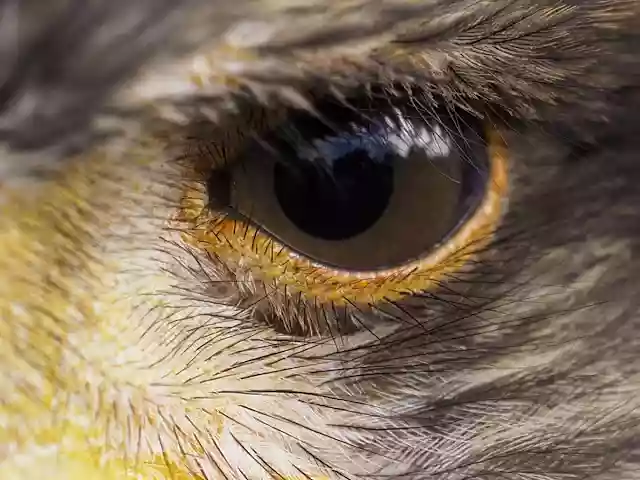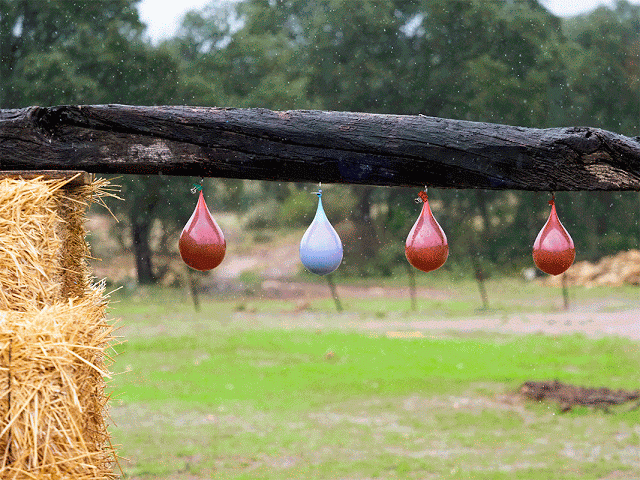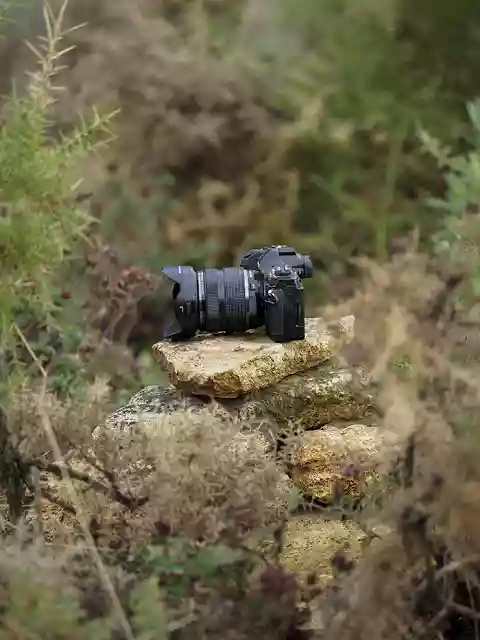- Call us: 01444 237070
- Contact Us
- Stores
- Sign In / Register
-
- Back
- Used Cameras
- Used Lenses
- Used Video
- Used Film Equipment
- Used Stock Alert
- Used Accessories
- Recently Added Used Equipment
- Used Clearance
- Faulty
- Park Picks
- Sell or Part Exchange
- Trade-In
- Blog
- New in
- Call us
- Contact us
- Stores
- Sign in
- Categories
- Tips & Inspiration
- Reviews
- News
- Events
- Features
- Buying Guides
- Competitions
Olympus OM-D E-M1 Mark II Review
A few weeks ago I had the opportunity to get hands on with the new Olympus OM-D E-M1 Mark II at Olympus' European launch event in Ronda, Spain.

As a natural Canon shooter, I anticipated having to spend the first few hours of the day learning where everything on the camera was, and wishing it felt differently in my hand; I thought it would be like getting a hire car - it's still a car, but somehow it just doesn't feel quite right.
However, I was swiftly proved wrong. The E-M1 Mark II felt as natural in my hand as any camera I've ever owned. It has a really solid feel, a nice healthy weight, and feels like a proper camera - this was another of my preconceptions, that the E-M1 Mark II wouldn't feel like a 'proper', 'serious' camera because it uses the Micro Four Thirds system and is notably smaller than a DSLR. Once again, happily, my preconceptions were baseless; it's got a chunky, angular body & the camera feels as robust, reliable and real as any DSLR I've ever used.
At the Olympus event, I had the chance to test a few of the E-M1 Mark II's headline features. In this review I'll be focusing on the handling of the camera, its features, and my thoughts on the image and video results. Head over to our Olympus OM-D E-M1 Mark II page for all the technical info, including specs on the camera.

First Impressions & Build Quality
Build wise, the camera feels really solid. It feels trustworthy and dependable, there's a good weight to it, and the grip feels incredibly natural in the hand. The all-magnesium alloy body has been well designed; the shutter button is in a good place and the dials and buttons are all within easy reach - and there's a lot of them. On the top we've got the On/Off switch, AF function button and continuous shooting, self timer and HDR option button all on the left of the viewfinder. Over on the right we've got the standard mode selection dial with all the modes you'd expect on a fully manual camera.
Then, in terms of dials, you've got two extra dials - a rear dial that can be operated by your thumb and can be programmed to change aperture, shutter speed etc, and there's a similar dial at the front to be operated by your shutter finger for the same purpose. This means that with two fingers, with the camera up to my face, I was easily able to scroll through shutter and aperture and adjust them while shooting. All the buttons and dials on the E-M1 Mark II have a satisfyingly responsive 'click' (some call it a 'clunk') to them, so you know when they've been pressed or turned.
Ergonomically, two things really stood out for me. The first was the robustness of the flip-out LCD touchscreen. Occasionally these screens can feel flimsy and like you'll snap it off if you're a bit too vigorous or heavy handed - but not with the E-M1 Mark II - the screen is sturdy and robust. Even the finger slot to flip the screen out is large enough so those those of us with chunky fingers won't struggle.
The second feature I noticed was the protruding viewfinder & eyepiece. All too often a compact camera has been designed with the viewfinder virtually flush to the camera, which means you get the nose-pressed-against-the-screen issue when you're trying to look through it. But with the E-M1 Mark II I didn't have such issues. The viewfinder and eyepiece protrude from the rear of the camera just enough that it made shooting with it really comfortable - even while wearing glasses. The electronic viewfinder is bright, clear and quick - I was shooting some fairly quick moving objects and it had absolutely no trouble keeping up with panning and zooming - all thanks to the 120fps refresh rate and 5 millisecond response time.
Shooting & focusing Speeds
Much has been said about the speed of the the E-M1 Mark II and how fast it is in terms of frame rate and focusing ability. So does it live up to the hype?
The short answer is that yes, yes it does.

These bulls were charging towards me at full tilt but even so, shooting in the 18fps Continuous AF Tracking mode the E-M1 Mark II had absolutely no trouble snapping on to the moving subjects and would stay there for several frames.
Shooting these kinds fast moving subjects was made even easier by the dual AF system consisting of 121 points of Phase Detection AF alongside a Contrast Detection AF.
Having little-to-no experience of photographing wildlife or fast moving subjects before, I was apprehensive that I'd be able to capture any images to include in this review; but the EM1 Mark II made me feel like a seasoned pro.
Shooting at these kinds of speeds is made even more pleasurable by the 5-Axis in-body image stabilisation which steadied my nervous hands and gave these lovely and sharp images.

While the staff at this ranch herded the bulls down the lane towards us into their pen, they were accompanied by possibly the world's smallest herding dog - named Kiwi.
He was corralling the bulls all the way, barking and confidently leading the pack. When I noticed Kiwi and this bull squaring off against each other I quickly panned across and fired off a few frames before Kiwi ran off to bother another bull.
In those few seconds, the E-M1 Mark II confidently locked focus and, considering I was using a long lens and was expecting some focusing flittering due to the focal length compression, I was dutifully impressed by how the camera was able to intuitively focus on the subject and let me fire off a few frames.

5-Axis In-Body Image Stabilisation
This is by far my favourite feature of the E-M1 Mark II and the most impressive in terms of what it means for the potential of the camera.
The images below were shot, handheld, at 150mm (300mm at 35mm equivalent) and, as you can see from the 100% crop, they're pin sharp.
A pleasing accolade to the 20MP Live MOS sensor, they're also full of detail and life. The colours are faithfully life-like and even the bokeh of the defocused background is smooth - impressive for a Micro Four Thirds camera.
We alluded when the E-M1 Mark II was first announced that it would be a favourite amongst sports and wildlife photographers, and having tested it in the real world, I can see that being true. Unlike previous models, the image stabilisaton in the Mark II works with any micro four thirds lens, or older four thirds lenses, that you attach to the camera.
The E-M1 Mark II boasts 5.5 stops of exposure compensation thanks to the in-camera image stabilisation - a small but welcome improvement on the 5 stops available in the Mark I. Additionally, Olympus have introduced a new feature called Sync IS, which although I didn't get a chance to try it in action, is an exciting prospect. Sync IS only works with two lenses at the moment and boosts the 5-stop in-camera stabilisation to up to 6.5 stops with additional digital stabilisation.



This video from our friends over at CameraJabber.com shows just how impressive the image stabilisation is for recording video:
When you combine this level of outstanding stabilisation with the super-fast focusing system and the 4K video recording capability of the E-M1 Mark II, it's easy to imagine the possibilities this camera opens up for filmmakers, videographers, and professional photographers who are looking to venture into the moving image world.
Other video experts have noted that this level of stabilisation means that hand-held gimbals and other devices are no longer needed for recording video. Further cementing the E-M1 Mark II as a video-capable stills camera, it also features two HDMI output modes: Monitor Mode for using an external monitor display and Recording Mode for recording direct to an external monitor recorder.
High-speed shooting in PRO Capture Mode
The PRO Capture Mode on the E-M1 Mark II sounded, on paper, like an exciting feature for shooting lightning-fast moving objects.
In the real world - it's an exciting feature for shooting lightning-fast moving objects!
When you half-press the shutter button, PRO Capture mode records a continuous rolling buffer of 14 frames, at 60fps, for up to a minute using the camera's silent electronic shutter. When you fully press the shutter button, that frame and the previous 14 are saved to the camera's card.
Here's an idea of what that looks like in real life:

And here's a high-res still from the above set:

I shot several test sets with of this arrow-through-the-balloon setup and after about the third or fourth attempt it became an absolute doddle to capture these kinds of images.
In the right hands, this opens up endless possibilities for professional and enthusiast users and I imagine we'll be seeing many many GIF-sets using this mode in the future - of thundering horses, football tackles, baseball strikes, Hummingbirds, Starling displays... the options are endless.

Parting Thoughts
The Olympus O-MD E-M1 Mark II is one of the most exciting cameras to join the market in 2016 - it's been hotly anticipated and much has been said about how it will fare against its predecessor, the E-M1 Mark I.
Having had my hands on the camera and put it through its paces (on a rather rainy day), I was massively impressed with it. It feels and handles like any pro-level DSLR I've ever used, and with 4K video, 5-axis image stabilisation, high speed sequential shooting, a 20MP sensor, a dual fast AF system, and modes like PRO Capture mode, and full-weather sealing, it's clearly built for the professional or serious enthusiast user who needs a camera with hi-speed performance and exceptional image quality and processing ability.
The images delivered by the E-M1 Mark II are excellent - full of vibrant and life-like colours, natural shadows and excellent tonal depth; and the same goes for the super-stable video.
All-in-all, this is a seriously impressive camera that can handle most tough conditions and shooting situations that you can throw at it.
The Olympus E-M1 Mark II is available to buy from Park Cameras for £1,849
Share this post:
By Park Cameras on 15/12/2018

Trade in your old equipment
Fast and easy trade in service ensures your old gear is collected efficiently and you are paid quickly! It's very simple to trade in your unwanted photography gear. Just head over to our dedicated Sell or Part Exchange page, fill out the details, and we'll get back to you with an offer for your old gear. Take the cash, or put it towards the cost of your new gear. It's up to you! Find out more
sign up to the newsletter
Keep up to date on the latest photography news, events and offers. Sign up now
